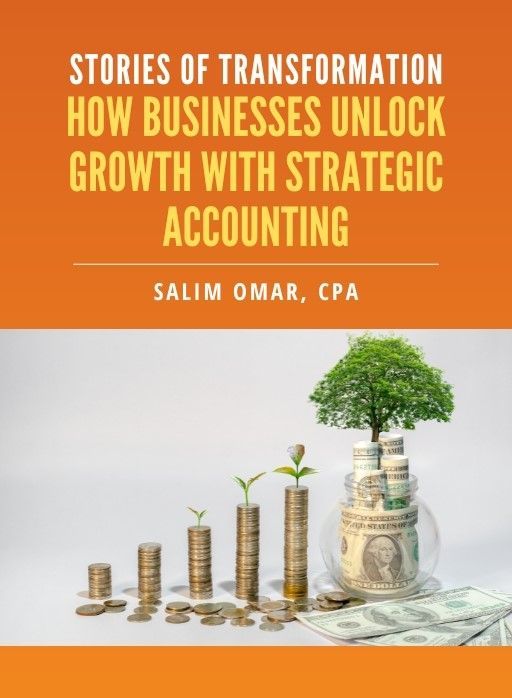Breaking Out of Bookkeeping: How a Strategic CFO Prepares You for Q4 Growth

Q4 can feel like sprinting a relay with your shoelaces tied together. Sales targets, hiring pushes, budgeting cycles, vendor negotiations—and then the numbers start running the show. That’s where a strategic CFO steps in, not to drown the business in spreadsheets, but to turn the financial engine into a platform for growth.
A CFO’s job in Q4 isn’t bookkeeping. It’s building clarity, control, and confidence—so decisions get faster, cash stretches further, and the team executes without panic.
What a Strategic CFO Actually Does (and Doesn’t)
Let’s clear the air. A CFO isn’t just closing books or reconciling transactions. That’s bookkeeping. A strategic CFO:
- Translates numbers into decisions leaders can act on.
- Turns data into rolling forecasts and “if-then” playbooks.
- Orchestrates cash, pricing, and capacity so growth doesn’t break the business.
Picture this: it’s mid-October. Sales are lining up deals, operations are stretched, and costs are moving. Charge ahead without a plan, and it can lead to empty shelves, write-offs, or even payroll crunches. With a CFO guiding the effort, leaders know what to accelerate, what to pause, and how to finance the push without last-minute chaos.
Why Q4 Is the Moment to Upgrade from Bookkeeping to CFO
Some teams treat CFO support as a “nice to have.” In Q4, it’s a growth lever. Here’s why:
1. Fewer Costly Surprises
Q4 is when sunk costs hide in plain sight. A CFO surfaces true margins by channel, product, and customer—so the company stops betting on low-return work and doubles down on what compounds.
2. Breathing Room for Cash Flow
Holiday timing, inventory builds, receivable lags—cash gets tight. A CFO sequences payables, tunes terms, and models collections so growth doesn’t stall at the bank account.
3. Time for High-Impact Moves
Pricing updates, vendor renegotiations, capacity planning, hiring plans—these aren’t last-minute decisions. They pay off when they’re modeled, timed, and actively managed.
4. Cleaner Compliance, Fewer Headaches
Multi-entity, multi-state, contractor-heavy, or subscription revenue? A CFO aligns policies, tightens close processes, and partners with tax advisors—so audits, lender conversations, and year-end reviews aren’t a scramble.
Myths That Need Retiring
“CFOs are just for big companies.”
Not anymore. Fractional CFOs give small and mid-sized teams senior-level planning without full-time overhead.
“It’s just fancy bookkeeping.”
Bookkeeping records the past. CFOs shape the future—with forecasts, scenario plans, and capital strategy.
“We can do this after Q4.”
That’s when commitments are already locked. The best gains come before the rush—pricing, promotions, spend, and hiring aligned to a clear model.
Timing Is Everything
If the business runs on a calendar year, Q4 is when growth bets are made and measured. Wait until January, and the plan is already set—often without the cash discipline, margin clarity, or capacity to back it up. The smart move is getting CFO-level visibility before spend and commitments lock in.
Teams that bring a CFO into the room see the difference between “we think it’ll work” and “we know how it works—and what we’ll do if it doesn’t.”
How a Strategic CFO Prepares You for Q4 Growth
- Get leadership around the numbers
Finance isn’t a back office—it’s a playbook. Align executives on the model that drives goals: revenue drivers, unit economics, and capacity constraints. Decide how much growth the current system can support—and what must change to support more.
- Tighten the operating rhythm
Shorten feedback loops. Weekly cash huddles. Biweekly forecast updates. Clear variance reviews for revenue, gross margin, and operating expenses. Define decision rights so approvals don’t bottleneck execution.
- Dial in pricing and margin
Tune pricing, discounts, and product mix. Retire low-margin SKUs or channels. Push profitable bundles and value-based pricing. Negotiate cost breaks before peak demand hits. Make margin the guardrail, not the afterthought.
- Fortify cash and capital
Model cash 13 weeks out. Sequence payables to protect mission-critical vendors. Accelerate receivables with terms, deposits, and incentives. Line up a facility or contingency capital before it’s urgent and expensive.
- Plan capacity before demand spikes
Model headcount, contractors, throughput, and supplier lead times. Invest where constraint meets opportunity—operations, inventory, tooling, or technology. Tie hiring and inventory bets to scenario triggers in the forecast.
- Clean the data that drives decisions
Standardize SKUs, customers, and channels. Close the lag between operations and finance. Reconcile inventory and COGS. The cleaner the inputs, the sharper the moves—and the more credible the forecast.
- Make it measurable
Drive momentum and accountability with a weekly review of the few metrics that matter—cash runway, gross margin by mix, contribution margin by channel, sales capacity utilization, and working capital turns—tracked in a consistent format.
Bottom Line
Breaking out of bookkeeping isn’t about more reports—it’s about better decisions, made faster, with fewer regrets. A strategic CFO gives Q4 what it needs most: clarity on where growth really comes from, control over the cash that funds it, and the confidence to scale without chaos.
For teams aiming for a strong finish and a smarter start to next year, bringing CFO strategy into
Q4 isn’t a luxury. It’s a multiplier.
Free eBook:
Stories of Transformation


Salim is a straight-talking CPA with 30+ years of entrepreneurial and accounting experience. His professional background includes experience as a former Chief Financial Officer and, for the last twenty-five years, as a serial 7-Figure entrepreneur.




